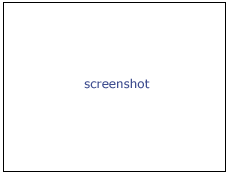Difference between revisions of "GtractAnisotropyMap"
(Created page with '__NOTOC__ ===Anisotropy Map=== Anisotropy Map {| |thumb|280px|User Interface |thumb|280px|Output |[[Image:…') |
m (Text replacement - "https?:\/\/(?:www|wiki)\.slicer\.org\/slicerWiki\/index\.php\/([^ ]+) " to "https://www.slicer.org/wiki/$1 ") |
||
| Line 40: | Line 40: | ||
|- | |- | ||
| − | |Program documentation-url || | + | |Program documentation-url || https://www.slicer.org/wiki/Modules:GTRACT |- |
| − | |||
| − | |- | ||
|} | |} | ||
Latest revision as of 13:19, 27 November 2019
Home < GtractAnisotropyMapAnisotropy Map
Anisotropy Map
General Information
Module Type & Category
Type: CLI
Category: Diffusion.GTRACT
Authors, Collaborators & Contact
Author: This tool was developed by Vincent Magnotta and Greg Harris.
Contributors:
Contact: name, email
Module Description
| Program title | Anisotropy Map |
| Program description | This program will generate a scalar map of anisotropy, given a tensor representation. Anisotropy images are used for fiber tracking, but the anisotropy scalars are not defined along the path. Instead, the tensor representation is included as point data allowing all of these metrics to be computed using only the fiber tract point data. The images can be saved in any ITK supported format, but it is suggested that you use an image format that supports the definition of the image origin. This includes NRRD, NifTI, and Meta formats. These images can also be used for scalar analysis including regional anisotropy measures or VBM style analysis. |
| Program version | 4.0.0 |
| Program documentation-url | - |
Usage
Use Cases, Examples
This module is especially appropriate for these use cases:
- Use Case 1:
- Use Case 2:
Examples of the module in use:
- Example 1:
- Example 2:
Tutorials
- Tutorial 1
- Data Set 1
Quick Tour of Features and Use
A list panels in the interface, their features, what they mean, and how to use them.
|
Development
Notes from the Developer(s)
Algorithms used, library classes depended upon, use cases, etc.
Dependencies
Other modules or packages that are required for this module's use.
Tests
On the Dashboard, these tests verify that the module is working on various platforms:
- MyModuleTest1 MyModuleTest1.cxx
- MyModuleTest2 MyModuleTest2.cxx
Known bugs
Links to known bugs in the Slicer3 bug tracker
Usability issues
Follow this link to the Slicer3 bug tracker. Please select the usability issue category when browsing or contributing.
Source code & documentation
Links to the module's source code:
Source code:
Doxygen documentation:
More Information
Acknowledgment
Funding for this version of the GTRACT program was provided by NIH/NINDS R01NS050568-01A2S1
References
Publications related to this module go here. Links to pdfs would be useful.

